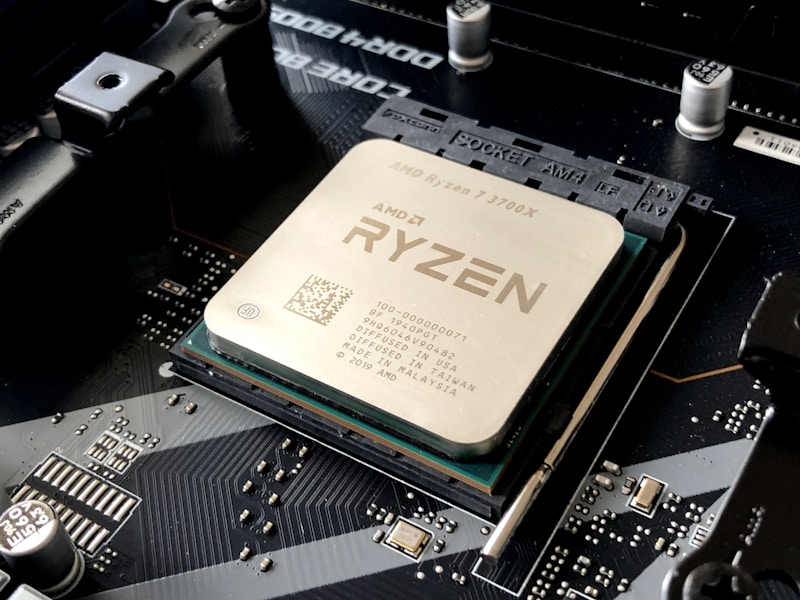Apple announced the M5 chip, delivering a dramatic 4x improvement in AI GPU performance alongside 45% graphics uplift and the fastest CPU cores ever in Apple silicon. The new chip debuts in MacBook Pro, iPad Pro, and Vision Pro, positioning Apple's devices as AI-first platforms capable of running sophisticated on-device models.
Breakthrough Specifications
The M5 represents Apple's most significant generational leap in AI capabilities:
- 16-core Neural Engine optimized for machine learning
- 153GB/s memory bandwidth for data-intensive AI workloads
- 4x AI GPU gains over M4 generation
- 45% graphics performance increase for creative professionals
- Enhanced efficiency cores extending battery life during AI tasks
These improvements enable real-time AI features that previously required cloud processing, fundamentally changing what's possible on Mac and iPad.
On-Device AI Strategy
Apple's M5 strategy doubles down on on-device AI processing—running models locally rather than sending data to cloud servers. This approach delivers:
Privacy benefits: Sensitive data never leaves the device, addressing growing consumer concerns about AI privacy.
Performance advantages: No network latency means instant AI responses, crucial for creative workflows and productivity applications.
Offline capability: AI features work anywhere, even without internet connectivity—important for professionals working remotely.
Cost efficiency: No recurring cloud processing fees, making advanced AI accessible to all users rather than premium subscribers.
Target Applications
The M5's AI prowess enables new capabilities across Apple's ecosystem:
Creative Professionals: Real-time video effects, advanced photo editing with AI-powered selection and enhancement, 3D rendering acceleration, and audio processing for music production.
Developers: On-device model training and testing, rapid prototyping of AI features, Core ML optimization, and ARKit enhancements for spatial computing.
Knowledge Workers: Advanced document analysis, real-time translation, meeting transcription and summarization, and intelligent email management.
Consumers: Enhanced Siri capabilities, computational photography improvements, personalized content recommendations, and immersive gaming experiences.
Vision Pro Integration
The M5's arrival in Vision Pro is particularly significant for spatial computing. The chip's AI capabilities enable:
- Eye tracking with unprecedented accuracy
- Hand gesture recognition for natural interaction
- Real-time environment understanding for AR applications
- Spatial audio processing adapting to room acoustics
- Avatar generation for realistic telepresence
These features make Vision Pro more practical for professional use cases—from architectural visualization to remote collaboration—where AI enhances rather than replaces human capability.
Competitive Positioning
Apple now competes directly with Nvidia's workstation GPUs for AI development, particularly for developers optimizing models for Apple silicon. The M5's unified memory architecture eliminates bottlenecks that plague traditional GPU setups, potentially offering better price-performance for many AI workloads.
The chip also challenges Microsoft's Copilot+ PC initiative and Qualcomm's Snapdragon X Elite, which tout AI capabilities as primary selling points. Apple's advantage lies in deep hardware-software integration and mature developer ecosystems.
Developer Ecosystem
Apple is simultaneously expanding Core ML and ML Compute frameworks, making it easier for developers to leverage M5's capabilities:
- Pre-trained models for common AI tasks
- Optimized frameworks for neural network acceleration
- Developer tools for profiling AI performance
- Documentation and sample code for rapid prototyping
The company is clearly positioning Mac as the premier platform for AI development—not just running AI applications, but creating them.
Energy Efficiency
Despite massive performance gains, the M5 maintains Apple's focus on power efficiency. The chip delivers desktop-class AI performance while enabling:
- All-day battery life in MacBook Pro (18+ hours typical use)
- Fanless operation in MacBook Air and iPad Pro
- Reduced heat generation during sustained AI workloads
- Quiet operation crucial for professional environments
This efficiency advantage matters enormously for mobile professionals and creative workers who need performance without being tethered to power outlets.
Market Impact
The M5 launch intensifies Apple's challenge to traditional PC makers. Windows machines face pressure to match AI capabilities at comparable price points—difficult when Apple controls the entire hardware-software stack.
Intel and AMD must respond with competitive AI-focused chips, while PC manufacturers need compelling AI software that justifies premium pricing. The gap between Apple silicon and x86 alternatives widens with each generation.
Software Integration
The M5's capabilities shine through macOS and iPadOS features:
- Universal Control with AI-enhanced device coordination
- Live Text improvements recognizing more languages and contexts
- Photos app with advanced search and editing powered by on-device AI
- Final Cut Pro and Logic Pro with AI-assisted editing
- Xcode with AI code completion and bug detection
These software features make the M5's power accessible to everyday users, not just developers.
Looking Ahead
Apple's AI strategy centers on privacy-preserving, on-device processing—a philosophical stance differentiating the company from cloud-dependent competitors. The M5 represents hardware built ground-up for this vision.
Future iterations will likely continue pushing AI performance boundaries while maintaining efficiency and privacy commitments. As AI becomes central to computing experiences, Apple's integrated approach positions the company to lead the post-cloud AI era—where your most powerful AI runs locally, privately, and instantly on the device in your hands.
